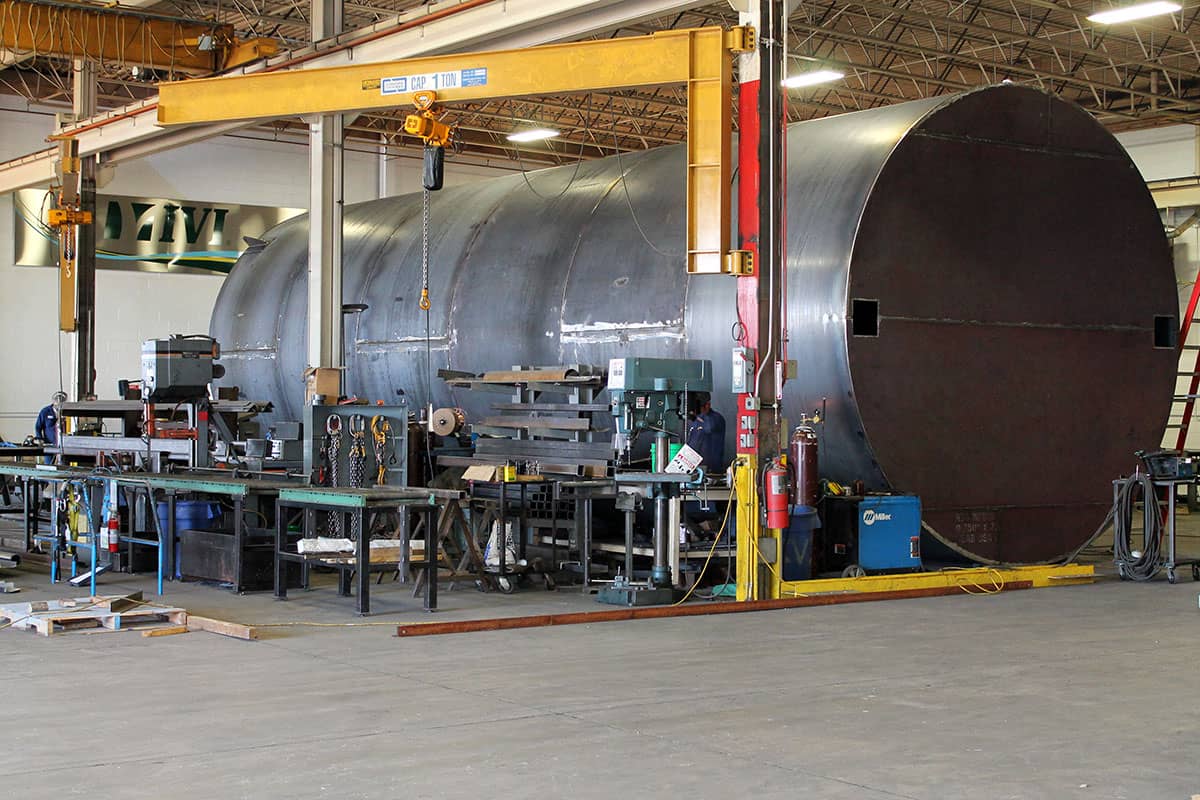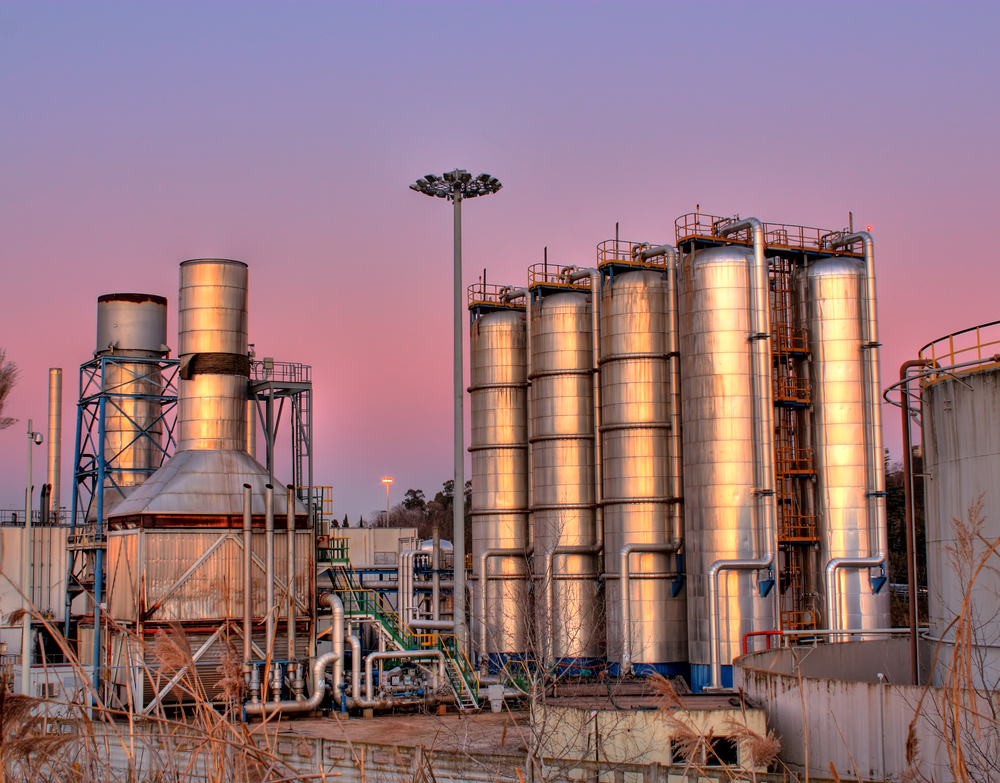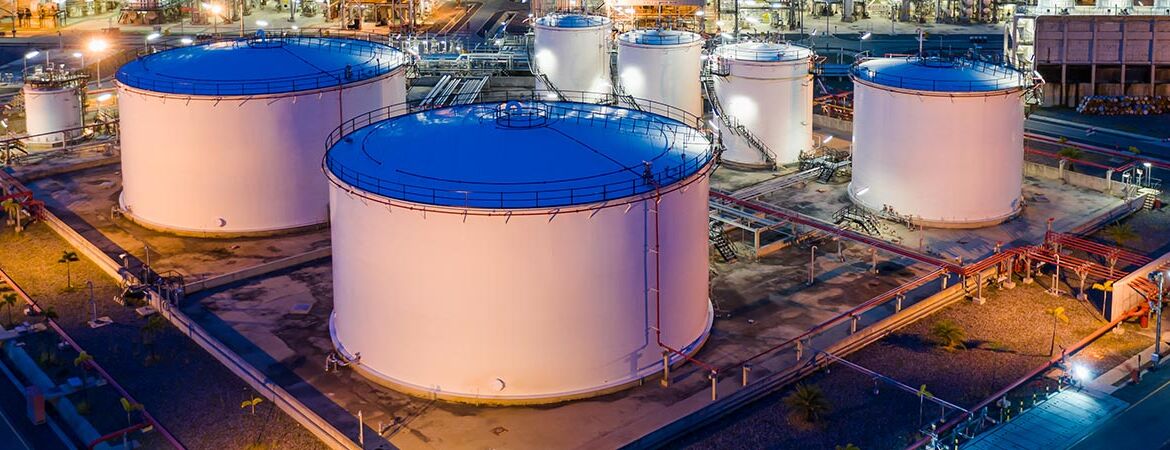Why Oil & Gas Storage Tank Fabrication is critical for meeting global demand
The Future of Storage Tank Manufacturing: Trends and Technologies to See
The storage tank manufacturing sector gets on the cusp of a critical development, driven by arising patterns in wise materials, automation, and sustainability. As sectors progressively prioritize environmental obligation, innovations such as environmentally friendly composites and IoT-driven tracking systems are improving functional paradigms. In enhancement, the growing need for customization and modular styles recommends a change towards more versatile production practices. Recognizing these trends not only highlights the obstacles ahead yet also discloses opportunities that might redefine the landscape of storage tank production in the coming years. What effects might these developments hold for sector stakeholders?
Developments in Smart Products
In recent years, the storage tank manufacturing market has experienced a significant uptick in the adoption of clever materials, changing layout and performance. Smart products, which can respond dynamically to environmental adjustments, have allowed manufacturers to produce containers that are not only a lot more sturdy but likewise extra efficient in their operational capacities.
One notable development is the combination of form memory alloys and polymers that can adjust to differing pressures and temperature levels. This flexibility boosts the architectural integrity of tanks, reducing the threat of failings and leaks (Texas Oil & Gas Storage Tank Fabrication Authority). In addition, these materials frequently show self-healing residential or commercial properties, which better extends the life-span of storage tanks, decreasing upkeep costs and boosting security
Moreover, the unification of sensors within clever materials permits real-time monitoring of storage tank problems, offering vital information that assists in predictive upkeep and risk administration. This data-driven technique not only boosts functional effectiveness however likewise aligns with ecological sustainability goals by enhancing resource use and avoiding spills.
Increase of Automation Technologies
The surge of automation technologies is changing storage tank manufacturing by incorporating robotics right into manufacturing processes, improving effectiveness and accuracy. Additionally, the deployment of wise sensors allows real-time surveillance, ensuring top quality control and safety standards are satisfied. AI-driven procedure optimization even more enhances procedures, decreasing expenses and improving general performance in the market.
Robotics Assimilation in Manufacturing
Robotics integration is transforming the manufacturing landscape, especially in the storage tank market. As manufacturers undertaking for raised performance and precision, robotics technologies are becoming vital devices for streamlining manufacturing procedures. Automated systems can doing repetitive jobs with higher speed and accuracy than human labor, decreasing the possibility of errors and improving general product high quality.
Among the crucial advantages of robotic assimilation is the capability to enhance workflows. Automated robot arms can deal with heavy products, weld elements, and perform inspections, which minimizes physical pressure on employees and lowers downtime. This shift not just enhances safety and security yet likewise allows human workers to focus on even more complicated and value-added jobs.
Robotics can facilitate versatile production, enabling firms to adjust rapidly to transforming market demands. Advanced programs allows robotics to conveniently switch in between different jobs and items, which is especially useful in an industry where customization is significantly desired
As robotics modern technology remains to advance, manufacturers can anticipate boosted abilities, consisting of improved equipment learning algorithms and increased fact applications, even more driving performance in storage tank production and setting brand-new requirements for the sector.
Smart Sensors Implementation

The data collected from these sensors can be leveraged to enhance the supply chain, making certain that materials are readily available when needed while reducing waste. This level of insight permits manufacturers to respond swiftly to changing conditions and client needs, enhancing general productivity.
Additionally, clever sensors contribute to enhanced governing compliance by continuously monitoring environmental aspects and guaranteeing adherence to safety criteria. As the industry progresses in the direction of more sustainable methods, the capacity to monitor discharges and source usage in real-time is very useful.
AI-Driven Process Optimization
Manufacturers in the storage tank market are progressively taking advantage of the power of AI-driven procedure optimization to boost functional performance and decision-making capacities. By incorporating advanced algorithms and artificial intelligence methods, business can evaluate large amounts of data generated throughout the manufacturing procedure. This data-driven strategy makes it possible for real-time surveillance of manufacturing metrics, resulting in more informed choices and timely treatments.
AI modern technologies promote anticipating upkeep, allowing manufacturers to prepare for tools failings before they occur, thereby reducing downtime and maintenance prices. Furthermore, these systems can optimize source appropriation by examining production patterns and changing process, guaranteeing that materials and labor are made use of effectively.
AI-driven optimization enhances top quality control by recognizing prospective defects throughout the manufacturing process. Automated examinations powered by AI can swiftly detect inconsistencies, making certain that only items satisfying strict top quality standards proceed with the production line.
As the storage tank market proceeds to accept automation, AI-driven procedure optimization stands apart as a transformative pressure, driving development and competition. By leveraging these innovations, manufacturers can not just improve operations yet also adapt promptly to market needs, placing themselves for sustainable development in an increasingly complex manufacturing landscape.
Emphasis on Sustainability Practices
As the storage tank manufacturing sector evolves, a substantial emphasis is positioned on sustainability techniques. This includes the fostering of environmentally friendly products, the execution of energy-efficient manufacturing procedures, and the assimilation of circular economy concepts. By focusing on these initiatives, manufacturers not only lower their ecological impact however also improve the long life and performance of their items.
Eco-friendly Materials Adoption
Progressively, the storage tank manufacturing sector is welcoming eco-friendly products as a fundamental element of sustainability methods. This change is driven by increased ecological recognition and governing pressures, motivating manufacturers to look for choices that decrease environmental influence.
Eco-friendly compounds and recycled metals are getting traction, supplying both efficiency and reduced carbon impacts. As an example, making use of high-recycled-content steel not just minimizes the need for virgin products however likewise improves the overall sustainability of the item lifecycle. In addition, manufacturers are exploring bio-based materials that offer resilience while being much less damaging to the atmosphere.
The adoption of eco-friendly coatings and coatings, which are complimentary from volatile natural compounds (VOCs), mirrors the market's commitment to minimizing air contamination and promoting much healthier working problems. These developments not only line up with global sustainability objectives however also satisfy the expanding market need for greener products.
The combination of eco-friendly products in storage tank production is not just a pattern; it stands for a proactive strategy towards liable manufacturing that prioritizes both ecological stewardship and financial practicality, establishing a new requirement for future growths in the sector.
Energy-efficient Manufacturing Processes
There is an expanding recognition within the storage tank manufacturing field of the significance of energy-efficient procedures as a necessary component of sustainable methods. As the sector faces boosting stress to lower its carbon footprint, manufacturers are carrying out innovative modern technologies and methods intended at minimizing energy consumption throughout the manufacturing cycle.
One substantial fad is the adoption of innovative production methods such as lean production and automation. These techniques improve procedures, minimize waste, and boost efficiency, while additionally reducing power use. Additionally, the assimilation of renewable resource sources, such as solar and wind power, into manufacturing centers is ending up being extra widespread, enabling firms to operate sustainably and lower dependancy on nonrenewable fuel sources.
Energy-efficient machinery and devices are being focused on in new investments, as manufacturers seek to optimize their energy consumption. Using power management systems enables real-time monitoring and analysis, assisting in constant enhancement in energy efficiency.
Circular Economic Situation Assimilation
A remarkable change in the direction of circular economic situation assimilation is changing sustainability methods within the storage tank manufacturing industry. This method emphasizes the significance of source effectiveness, waste decrease, and the recycling of products throughout the production lifecycle. By adopting have a peek at these guys round principles, manufacturers are increasingly concentrated on developing tanks that focus on recyclability, durability, and repairability.
As component of this adjustment, business are exploring cutting-edge products and production approaches that lessen environmental effect. The consolidation of recycled steels and plastics not only lowers the need for virgin sources however likewise lowers carbon discharges connected with removal and handling. In addition, manufacturers are carrying out take-back schemes that assist in the repair and recycling of end-of-life containers, thereby shutting the loophole in the manufacturing cycle.
Partnership amongst stakeholders, including clients and distributors, is necessary for cultivating a circular economic situation (Oil & Gas Storage Tank Fabrication). This partnership enables the sharing of finest techniques and urges the development of sustainable supply chains. Ultimately, incorporating round economy principles right into storage tank production not only improves ecological stewardship yet also settings firms to meet developing regulative criteria and customer assumptions for sustainability
Boosted Safety Procedures
In today's manufacturing landscape, improved security procedures have actually come to be crucial for storage tank manufacturers. The sector encounters increasing regulatory analysis and demands for higher safety standards as a result of the potential risks connected with the storage of hazardous materials. Manufacturers are embracing a diverse method to enhance security steps throughout the production process.
One significant development is the execution of innovative danger evaluation tools that identify possible dangers throughout the style and manufacturing phases. These tools promote aggressive procedures to reduce risks prior to they rise into essential concerns. In addition, manufacturers are buying employee training programs that emphasize safety and security methods, guaranteeing that all personnel are fluent in emergency situation procedures and equipment handling.
In addition, there is a growing emphasis on the usage of high-quality products and innovative layouts that improve architectural stability and reduce the chance of failings or leakages. Routine maintenance checks and rigorous testing methods are also being incorporated into the production lifecycle to guarantee conformity with safety and security policies.
Assimilation of IoT Solutions

IoT gadgets help with predictive upkeep, which reduces downtime and extends the life expectancy of storage space containers. By evaluating information collected from sensing units, manufacturers can carry out and foresee prospective failings maintenance tasks before critical issues arise. This positive approach not only conserves costs however also ensures compliance with security laws.
Furthermore, IoT combination supports much better supply management by offering exact, real-time data on kept products. Texas Oil & Gas Storage Tank Fabrication Authority. This ability aids manufacturers maximize their supply chains, guaranteeing that essential sources are readily available when required, therefore improving overall productivity
The execution of IoT remedies makes it possible for improved communication between storage tanks and centralized management systems, simplifying procedures. As the storage tank production sector remains to take on IoT technologies, we can expect significant improvements in safety protocols and functional effectiveness, eventually causing more resilient manufacturing techniques.
Modification and Modular Style
Versatility in style has come to be a foundation of contemporary storage tank manufacturing as customization and modular layout choices gain traction. The advancing requirements of industries such as oil and gas, chemicals, and water monitoring require tailored solutions that fit certain functional requirements. Personalization allows manufacturers to produce tanks that fulfill unique requirements pertaining to size, performance, product, and shape, ensuring peak performance and performance.
Modular design, on the various other hand, permits the assembly of pre-fabricated elements, resulting in considerable time and price savings. This technique helps with quick deployment and scalability, allowing organizations to adapt their storage space capacities in reaction to varying need. Additionally, modular systems can be conveniently increased or reconfigured, reducing downtime and improving functional flexibility.
The combination of sophisticated production technologies, such as 3D printing and computer-aided style (CAD), additional boosts modification opportunities. These developments allow specific design and quick prototyping, allowing for quick modifications and versions during the design process.

Regulatory Changes and Conformity
Regulative changes and conformity requirements regularly form the landscape of storage tank manufacturing, engaging manufacturers to stay alert and adaptable. With enhancing environmental worries and the promote lasting methods, governing bodies are carrying out more stringent standards concerning discharges, products, and security criteria. As an example, the united state Epa (EPA) and numerous state companies are changing policies that control the layout and setup of storage space tanks, specifically those made use of for harmful substances.
Manufacturers need to not just adhere to existing regulations however additionally prepare for future adjustments, requiring continuous financial investment in r & d. This includes embracing cutting-edge products and technologies that enhance storage tank stability and environmental management. Conformity with laws such as the Spill Prevention, Control, and Countermeasure (SPCC) regulation is important for manufacturers to stay clear of large fines and legal obligations.
Additionally, the integration of digital technologies facilitates compliance tracking and coverage, making it possible for manufacturers to preserve transparency and performance. As regulations remain to advance, remaining notified and positive is important for storage tank manufacturers to guarantee conformity, secure public health and wellness, and safeguard the environment, inevitably shaping a much more sustainable sector.
Often Asked Inquiries

What Are one of the most Typical Products Utilized in Storage Tank Manufacturing?
One of the most usual materials made use of in storage tank manufacturing consist of carbon steel, stainless steel, and fiberglass. Each material uses distinct advantages, such as toughness, rust resistance, and flexibility to different storage demands and ecological conditions.
Exactly How Do Storage Storage Tanks Impact Resident Ecosystems Throughout Setup?
Tank installation can interfere with regional environments by altering land use, influencing water drainage patterns, and possibly presenting contaminants. Correct site analyses and environmental administration practices are important to alleviate these impacts and protect biodiversity.
What Is the Typical Lifespan of a Modern Storage Tank?
The typical life-span of a modern storage tank normally ranges from 20 to three decades. Factors such as material top quality, ecological conditions, and upkeep techniques considerably affect long life and overall performance throughout their operational life expectancy.
Just How Do Manufacturers Ensure High Quality Control in Production?
Manufacturers assure quality assurance through extensive screening methods, adherence to industry standards, and continuous tracking throughout manufacturing (Oil & Gas Storage Tank Fabrication). Advanced technologies such as automation and real-time information evaluation additionally boost uniformity and integrity in storage tank manufacturing processes
What Are the Costs Connected With Maintaining Storage Containers?
Keeping tank entails various costs, including regular examinations, repairs, governing conformity, corrosion avoidance, and potential environmental remediation. These costs can considerably impact general operational budgets and necessitate positive monitoring to assure long-lasting performance and safety.
As manufacturers increasingly accept automation modern technologies, the release of clever sensors is becoming a critical aspect of modern production processes in the storage space tank sector. Manufacturers in the storage container market are progressively using the power of AI-driven process optimization to improve functional efficiency and decision-making abilities. Significantly, the storage container production sector is accepting green products as an essential aspect of sustainability methods. In today's manufacturing landscape, enhanced safety and security procedures have actually ended up being crucial for storage space tank manufacturers. Governing changes and conformity requirements regularly form the landscape of storage tank manufacturing, compelling manufacturers to stay adaptable and alert.